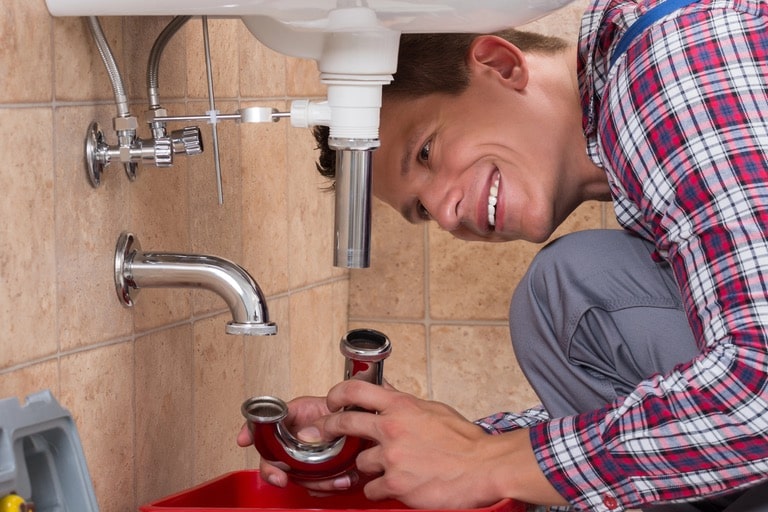Get Rid of Stubborn Clogs with These Drain Cleaning Techniques

Handling blocked drains can be inconvenient, but knowing drain cleaning fundamentals can make the task easier. Homeowners can tackle this common household issue using appropriate tools and knowledge, eliminating the need to use costly chemicals or hire experts. For more persistent problems, consult a drain plumbing service if DIY methods don’t resolve the issue.
The first step towards effective drain cleaning is identifying the cause of the blockage. Common culprits include hair, grease, soap scum, food particles, and sometimes even foreign objects. Understanding what you’re dealing with lets you choose the most effective method to clear the clog and restore your drain to full functionality. Each type of clog may require different techniques, so recognizing the symptoms can be a significant advantage.
Prevention is Key
One of the simplest ways to keep your drains clear is to prevent clogs. Regular upkeep can significantly reduce the chance of blockages. Simple practices like removing hair and debris from sinks and showers and avoiding pouring grease and coffee grounds down the drain can go a long way in preventing clogs. A drain cover can also catch larger particles before they go down the pipes and cause trouble.
Preventative measures not only save you time and effort but also prolong the life of your plumbing system. For example, regularly pouring a kettle of boiling water down your kitchen sink can help dissolve any grease or fat buildup, preventing it from solidifying and causing blockages. A well-maintained drain can help prevent more severe plumbing issues, saving money and frustration in the long term.
Baking Soda and Vinegar Solution
A popular and eco-friendly method for cleaning drains involves mixing baking soda and vinegar. This natural solution is effective for minor clogs and regular maintenance. Here is a detailed guide on how to utilize this technique:
- Add half a measure of baking soda to the drain.
- Add half a cup of vinegar after it. Vinegar’s acidic nature helps break down substances causing the blockage.
- Let the mixture sit for at least an hour. For better results, you can let it sit overnight. The chemical reaction between the baking soda and vinegar creates a fizzy action that loosens clogs.
- Flush the drain with hot water. Boil a water kettle and slowly pour it down the drain to wash away the dissolved clog.
Baking soda and vinegar efficiently clean pipes without causing harm. This method is safe to use regularly to prevent clogs from forming.
Using a Plunger
An efficient tool for clearing difficult blockages is a plunger. For best results, ensure adequate water in the sink or tub to submerge the base of the plunger. This creates a better seal and allows for more effective plunging. Then, use forceful, consistent plunging motions to break up the blockage.
This method works well for sinks, bathtubs, and even toilets. Plungers create a vacuum that can help dislodge whatever is causing the clog. This method is beneficial for blockages closer to the drain opening and can often be resolved with a few minutes of effort. Ensure you have the correct plunger type for the job; a cup plunger works well for sinks, while a flange plunger is more suitable for toilets.
Boiling Water Method
Sometimes, the most straightforward solutions are the best. Pouring boiling water directly into the drain can dissolve grease and soap buildup, clearing minor clogs. Be cautious when handling boiling water to avoid injuries. This technique is most effective on metal pipes and should be utilized cautiously on PVC pipes to prevent potential harm because of their lower heat resistance.
Pour the boiling water into stages, allowing it to work through the clog before adding more. This gradual approach ensures that the water can effectively dissolve the buildup. It’s also a good practice to run hot tap water down the drain for several minutes after using the boiling water method to ensure the clog is completely cleared.
Manual Removal with a Drain Snake
A drain snake also called an auger, can be helpful for stubborn clogs that are difficult to remove. Place the snake down the drain and turn it to grab onto or disrupt the blockage. This method is beneficial for eliminating hair and small objects that might be causing the blockage. Drain snakes come in various lengths and types, including manual and power-operated versions.
Depending on the severity of the clog and the location, you can choose the type that best suits your needs. For example, a short, manual snake is typically sufficient for bathroom sinks, while a longer, motorized snake might be necessary for larger pipes or more severe blockages. When using a drain snake, it’s essential to exercise patience and let the tool do the work to avoid damaging your pipes.
When to Call a Professional
While DIY methods are effective for minor clogs, there are times when professional help is necessary. If you have frequent blockages or believe there may be a more severe plumbing problem, don’t wait to seek help from a professional plumber to avoid additional harm to your pipes. Issues like tree root invasion, broken pipes, or severe blockages require specialized equipment and expertise.
Experts are equipped with the necessary tools and knowledge to identify and fix plumbing problems, guaranteeing your system’s safe and efficient functioning. If your efforts to clear the drain fail repeatedly, or you notice multiple drains are clogged simultaneously, it’s a clear sign that a more profound issue may be at play. Failing to pay attention to these indicators can result in more severe problems.




